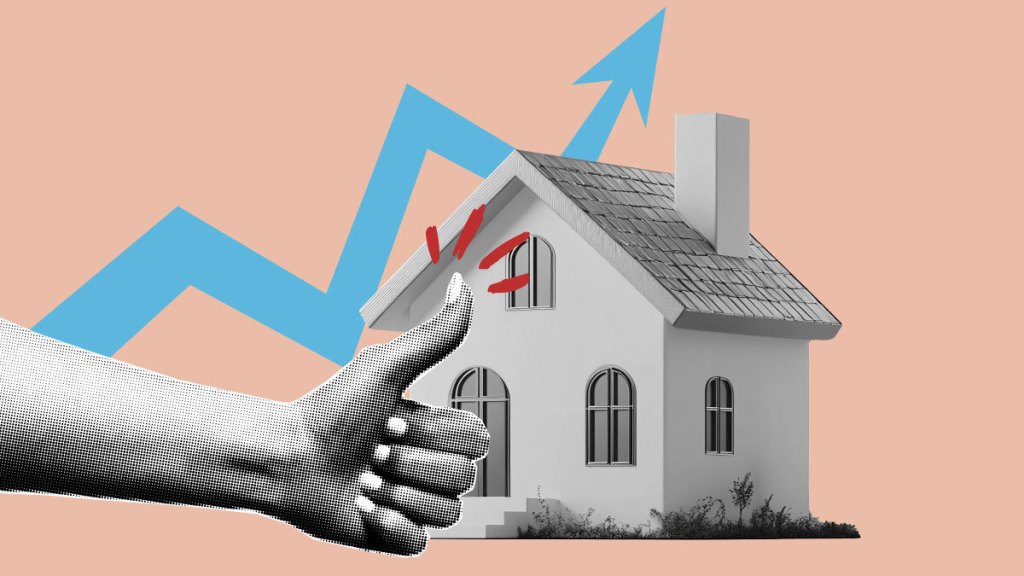We’ve now been in the post-pandemic housing market recession as long as we were in the pandemic boom. Two and a half years. As we look into 2025, the question everyone is asking is: Do we have a new era starting? Does the housing market start to get back to normal?
What can the data today tell us about signals for growth or weakness after the new year? We know inventory has been climbing all year. The number of unsold homes on the market is finally getting closer to 2019 levels.
We know sales are inching up, too. Anecdotally, I’m hearing about home sales picking up in November. The MBA’s mortgage applications data has been surprisingly strong. Our home price data is still trending higher than last year.
Home prices nationally are up 5% over last year. That’s normal. But, the market change isn’t evenly distributed. The northern cities have tight inventory and rising prices, some of the Sunbelt cities have the most inventory in many years, and some markets even have falling prices, too.
Let’s take a look at the data as we’re now in December 2024.
Inventory is growing
Let’s start with supply. There are 690,000 single-family homes unsold on the market around the U.S. That’s 26% more homes on the market than last year at this time. It’s now only 17% fewer homes on the market than at the end of 2019. We use 2019 as a proxy for “normal” times before the pandemic craziness hit — even though the unsold inventory in 2019 had been declining for most of the previous decade. In the 2010s, interest rates were very low for basically the whole decade and that encouraged Americans to buy and hoard real estate. Inventory shrank every year for most of the decade.
Above is the 10-year view of inventory in the U.S. Notice how basically every year over the last decade, we had fewer and fewer homes for sale. During that time, mortgage rates continually moved lower. We bought and hoarded more and more homes. That shortage reached its crisis peak in January 2022. Then, in the last three years, at the right end of the chart you can see that with each year with more expensive money, we’re slowly emerging from the crisis and growing the amount of unsold inventory. Now, there are just under 700,000 homes unsold on the market. In 2019, there were 850,000 unsold single-family homes on the market in December.
Interestingly, the growth in available supply of homes for sale in the last three years came from weaker demand. When demand slows, inventory grows.
Supply growth could also come from more sellers, such as investors or distressed borrowers unloading. However, in most of the country, we have no growth from the seller side. In Florida and Texas, we see the rising costs of insurance, taxes and climate risk driving some sellers.
New listings on trend
Nationally, there were just 31,000 new listings for single-family homes from the last week which included Thanksgiving weekend. We’ve been averaging about 8% more sellers each week than a year ago. Thanksgiving week came in on the same trend with 8.7% more sellers than the same week a year ago. Sellers are growing by 5% to 10% per week. We expect that growth to continue in 2025.
The pandemic boom took off in April 2020, came to a crescendo in Q1 2022 after a two-year buying frenzy, and hit an abrupt halt in July 2022. During this period, there were fewer sellers and many more buyers. As money became super cheap, we bought more homes and sold fewer.
Now we’re in the post-pandemic era, which we’ve colored here in blue. Each week has very few sellers, but lower demand means longer time on market and growing inventory of unsold homes. This growth in the number of sellers each week is generally healthy for the U.S. housing market, because more sellers implies more sales can happen.
Pending homes sales grow
As there are slightly more sellers than a year ago, we can also see home sales growing a bit. Home sales are running ahead of last years’ pace by approximately 10% each week. In fact, the headlines are starting to catch up to the data. There are a few data points like NAR’s latest estimates of home sales and the MBA’s mortgage applications that are starting to corroborate our data indicating that home sales have some growth over 2023 and that has not abated in December.
The market has been averaging 51,000 new sales pending each week over the last four weeks, including the holiday. That’s down from 54,000, and it’s normal to have fewer offers and sales happening in December. Like I said, by our count, home sales are running maybe even 10% above December of 2023. That’s not a lot of home sales, but it is an improvement.
As we look at 2025, it seems there is late year momentum, maybe it’s from buyers who waited until after the election and are now ready to act? Will that momentum continue into the spring? Hard to say, but like the slight growth in new listings, seeing a slight growth in home sales is an optimistic view of the housing market.
There are no signals of a big surge in homebuyers, although there are lots of potential homebuyers who put their moves on hold for the last three years. Some are starting to move now, but there’s no sign that a lot of them will dramatically change the trend of the post pandemic era. We see slight growth — not explosive growth — for home sales in 2025.
Home prices hold up
Home prices nationally continue to hold up over last year. The median price of single-family homes in the U.S. is $384,900 now. This is the median price of the homes going under contract each week. This is what people are buying. Even though the price ticked down in the latest data with the low volume over Thanksgiving weekend, home prices continue to be up about 5% over last year, on average in recent weeks.
I like tracking this number — the price of the newly pending sales — because it’s the easiest proxy for sales. These are the sales that are started, they’ll close later in December or in January. Home prices by this measure have appreciated by about 5% this year. That’s more than expected given how weak demand was earlier this year. As we look at 2025, we’re forecasting that home prices will grow less next year than they did this year — our expectations are for 3.5% home price gains in 2025.
Price reductions are leading indicator
When we look at the leading indicators of future sales prices, we see stability, and not much negative pressure. If you’re waiting for a big price correction before you finally pull the trigger to buy a home, there’s just no signal in the data of an imminent price correction. In the middle of December, 38.4% of the homes on the market have had price reductions from the original list price. That’s easing lower as we end the year. After the new year, fresh new inventory gets listed so the percent of homes with price cuts falls.
The level of price cuts now reflects the slow demand we’ve had all year. Price cuts have been stable for several months, which indicates that even after the hurricanes, for example, there is no signal of significant softening of home prices. This curve here, the dark line is 2024, and it’s easing down as you’d expect for the end of the year.
Mike Simonsen is the founder of Altos Research.
The HousingWire Economic Summit is coming in February in Dallas. It will bring together an impressive lineup of talented speakers for an inspiring day. You can register for this transformative event using the link below. Along with Mike Simonsen and myself, here are just a few remarkable speakers who will share their insights:
- Jessica Lautz, Deputy Chief Economist and Vice President of Research at NAR
- Barry Habib, CEO MBS Highway
- Selma Hepp, Chief Economist for CoreLogic
Registration link with my discount code is here.






